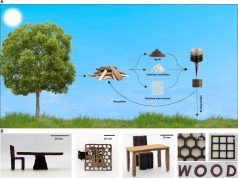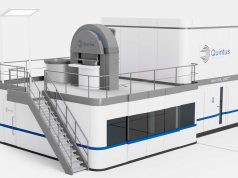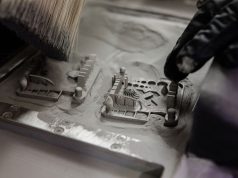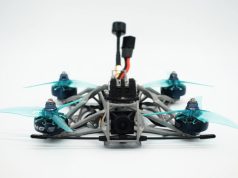People have always been fascinated by the view of the stars and it is no less fascinating to look at the earth from space. This is possible thanks to the invention of the telescope, which in its most modern form as a huge reflecting telescope optically penetrates into “infinite expanses”. At least in theory. Currently existing telescopes are limited by their mirrors. In the EU project LiveMirror, the INM – Leibniz Institute for New Materials and its partners are researching technologies that dissolve these limits. The INM will be presenting the new technology at the Hannover Messe from April 22 to 26.
In order to capture the light of faint objects in space or observe exoplanets, huge reflecting telescopes with extremely high resolution and range are required. Their performance depends, among other things, on the mirrors used to focus the light from space: The larger the mirrors are, the higher the light-gathering capacity and therefore the efficiency of the telescope. These mirrors are manufactured on the basis of glass or ceramic blanks, which are first ground and polished and then coated with metal. A certain thickness is required for the stability of the material. Unfortunately, however, the thicker the mirror, the heavier it is and the easier it is for unwanted deformations to occur.
This is where the research of the INM team led by Dr. Peter W. de Oliveira and his project partners from Germany, France and Spain comes in. In the LiveMirror project funded by the European Union, they are developing lighter mirrors with better performance, which can also be produced more cost-effectively using a new process. Thin sheets of glass are formed using a precise heating process and then coated with metal, for example. The mirror shape is fine-tuned using a network of control elements that are produced using 3D printing and applied to the back of the mirror. Through “electronic polishing”, these make grinding superfluous and regulate the smoothness of the mirror. Together with its partners, the INM is developing new material formulations for 3D printing the electrodes and control elements and is working on optimizing the optical coatings. In the future, the technology could also be used in the fields of optical energy transmission and optical communication.
LiveMirror is being funded by the European Union as part of the European Innovation Council (EIC) Pathfinder project with a total of 3.35 million euros over four years. The project coordinator is astrophysicist Dr. Gil Moretto from the CNRS in Lyon.
In addition to the LiveMirror technology, the INM will be presenting other technologies from its research portfolio at the Saarland joint stand (B 10) in Hall 2. These range from flame-retardant cement-free fiberboards to self-healing surface coatings and recyclable electronics.
Subscribe to our Newsletter
3DPresso is a weekly newsletter that links to the most exciting global stories from the 3D printing and additive manufacturing industry.
























